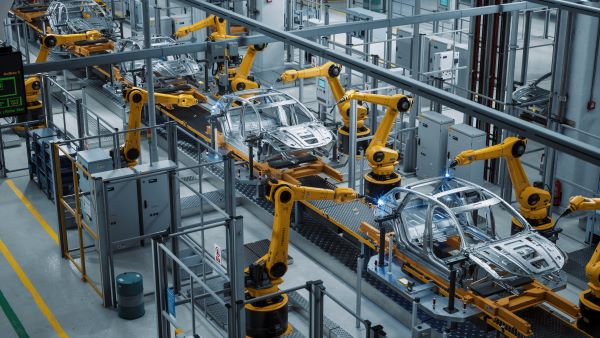In recent years, the automotive industry has witnessed significant advancements in materials used for autobody construction. These new materials have not only improved vehicle safety but also revolutionized repairability processes. From carbon fiber composites to high-strength steels, these innovative materials offer various advantages over traditional steel structures.
Carbon Fiber
One of the most notable materials being utilized in autobody construction is carbon fiber composite. Carbon fiber is an extremely lightweight and strong material made from thin strands of carbon atoms. It is commonly used in high-performance vehicles and luxury cars due to its excellent strength-to-weight ratio. By incorporating carbon fiber into the construction of autobody panels, manufacturers are able to reduce the overall weight of the vehicle while maintaining structural integrity.
The use of carbon fiber composites in autobody construction has several benefits. Firstly, carbon fiber composites are significantly lighter than traditional steel structures, resulting in improved fuel efficiency and reduced emissions. This weight reduction also enhances the overall performance and handling of the vehicle. Additionally, carbon fiber composites have high tensile strength, making them highly resistant to impacts and collisions. This ultimately improves vehicle safety by providing better protection for occupants in the event of a crash.
High Strength Steel
Another material that has gained popularity in autobody construction is high-strength steel. High-strength steel is a type of steel that has been engineered to have increased strength and durability compared to traditional mild steel. It offers improved crashworthiness and structural integrity, making it an ideal choice for autobody construction.
High-strength steel provides several advantages over other materials. Firstly, it allows for the design of lighter and more fuel-efficient vehicles without compromising on safety. This is because high-strength steel has a higher strength-to-weight ratio than traditional steel, allowing for thinner and lighter autobody panels. The use of high-strength steel also improves vehicle crashworthiness by better absorbing and distributing impact forces during a collision. This helps to protect occupants and reduce the risk of serious injuries.
Aluminum and Magnesium Alloys
In addition to carbon fiber composites and high-strength steel, other materials such as aluminum and magnesium alloys are also being explored for autobody construction. Aluminum is lightweight and offers good corrosion resistance, making it an attractive choice for manufacturers looking to reduce vehicle weight and improve fuel efficiency. Magnesium alloys, on the other hand, are even lighter than aluminum and have excellent strength-to-weight ratios. However, their use in autobody construction is still limited due to challenges in manufacturing and cost.
Further Reading: Composites as auto-body reinforcements | CompositesWorld
Advantages of New Autobody Materials
The advancements in materials used in autobody construction have not only improved vehicle safety but also revolutionized repairability processes. Traditional steel structures are often difficult to repair, requiring extensive welding and replacement of damaged panels. However, carbon fiber composites and high-strength steel offer easier repairability due to their modular designs.
Carbon fiber composites can be repaired by replacing individual damaged panels or sections, while high-strength steel can be repaired through spot welding or section replacement. This reduces repair costs and turnaround times for vehicle owners, improving overall customer satisfaction.
Further Reading: 3M opens state-of-the-art training facility to educate and upskill automotive technicians
Conclusion
The automotive industry has seen significant advancements in materials used for autobody construction in recent years. Materials such as carbon fiber composites and high-strength steel offer numerous advantages over traditional steel structures, including improved fuel efficiency and reduced emissions, enhanced performance and handling, increased crashworthiness and occupant safety, and easier repairability. Additionally, materials like aluminum and magnesium alloys are being explored for their lightweight properties and corrosion resistance.
These advancements in materials have not only improved vehicle safety but also revolutionized the repairability processes, ultimately enhancing customer satisfaction. As technology continues to advance, it will be interesting to see what new materials will be discovered and utilized in autobody construction, further improving the performance, safety, and sustainability of vehicles.
Related News:
- Advanced lightweight materials for Automobiles: A review – ScienceDirect
- What emerging material innovations could make vehicles lighter? – PreScouter – Custom Intelligence from a Global Network of Experts

